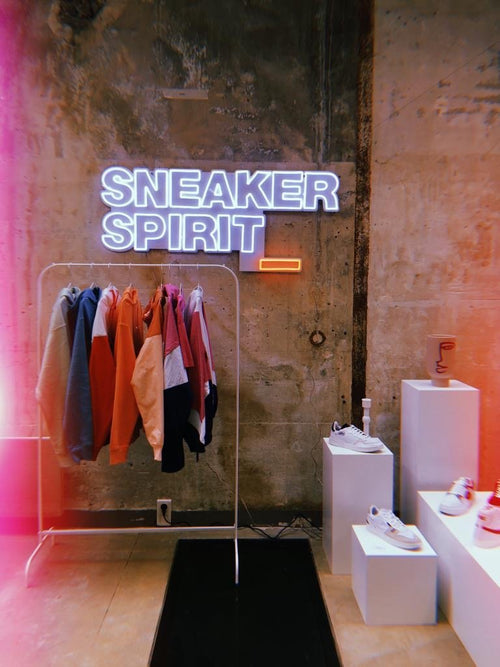In today’s highly competitive market, businesses are constantly looking for ways to stand out and build stronger connections with their customers. One powerful tool that can help achieve these goals is the use of custom signs. Custom signs are versatile marketing tools that can be used both indoors and outdoors to represent a brand, create a memorable experience, and drive sales. From storefront signs to directional signage, these custom creations serve as essential components of a company's visual identity. In this detailed analysis, we will explore how custom signs can enhance a business's branding, improve the customer experience, and ultimately increase sales. Furthermore, we will discuss the key factors businesses need to consider when designing these neon signs to maximize their effectiveness.
1. Branding and Recognition
One of the primary reasons businesses invest in custom signs is to enhance their branding efforts. Custom signage is a direct reflection of a company's visual identity, helping establish a memorable and recognizable presence in the minds of consumers. When designed correctly, signs can reinforce a brand's message, tone, and personality, making them a key part of a business's overall marketing strategy.
Visual Consistency:
Custom signs help ensure visual consistency across all touchpoints of a business. Whether it's an outdoor storefront neon sign, an interior directory sign, or point-of-sale displays, all of these elements should carry consistent branding that aligns with the company's logo, color palette, typography, and other visual elements. Consistency in design helps solidify brand recognition. For example, a bold and modern logo on a custom sign will immediately convey a sense of sophistication and professionalism if that's the brand's identity.
Differentiation from Competitors:
In a crowded marketplace, differentiation is crucial for standing out. Custom signs give businesses the opportunity to create unique, memorable visuals that reflect their values, uniqueness, and offerings. A well-designed sign not only attracts attention but also helps convey what makes the business different from its competitors. For instance, a coffee shop that uses a neon custom sign with quirky, hand-drawn fonts may appeal to a creative, millennial audience looking for a more personalized experience, whereas a more polished corporate office may opt for sleek, minimalist signs that reflect their professionalism and attention to detail.
2. Customer Experience and Navigation

Custom signs are also critical for enhancing the customer experience. Whether it's helping customers find your store or providing clear directions inside your premises, signage plays a significant role in making a customer's journey smoother and more enjoyable. Effective signage helps customers feel confident in their decisions and less frustrated in navigating unfamiliar spaces.
Wayfinding and Directional Signage:
One of the most common uses of custom signs is for wayfinding. Customers often visit large shopping centers, hospitals, airports, or corporate buildings that can be confusing to navigate without clear signage. Custom wayfinding signs, whether they're hanging, directional arrows, or floor decals, are essential for guiding customers to the right location. These signs provide clear instructions, ensuring visitors feel at ease and know where to go.
For example, in a shopping mall, custom signage can direct customers to different sections, such as the food court, restrooms, or specific retail stores. A well-designed directory system inside the mall can quickly help a visitor locate the stores they need without frustration, improving their experience and encouraging them to spend more time in the venue. This is especially important in environments where time is limited, such as in airports or hospitals, where clarity and efficiency are key.
Personalization and Comfort:
Another way custom signs can improve customer experience is through personalization. neon signs are not just functional; they can also help create an atmosphere that aligns with the company’s brand and values. A boutique store, for instance, may incorporate vintage-style signs or hand-painted typography that adds a sense of charm and uniqueness to the space. Similarly, restaurants can use custom signs to enhance their ambiance, like menus displayed on creative boards or wall signs that communicate the store’s culinary ethos. These elements contribute to making customers feel comfortable and immersed in the brand, leading to a more positive overall experience.
3. Driving Sales and Conversion
Custom signs are not only useful for branding and customer experience but also serve as powerful sales tools. Strategically placed signage can encourage purchases, create urgency, and increase conversion rates.
Point of Purchase (POP) Signage:
Point of purchase signage refers to signs placed near products or at checkout areas to encourage customers to make a purchase. Custom signs at the point of sale can highlight sales, promotions, or new arrivals, driving immediate action. For example, a custom sign advertising a "Buy One, Get One Free" offer placed near the product can capture the customer's attention and encourage them to take advantage of the deal, leading to increased sales volume. In retail environments, POP signs can feature bold call-to-action (CTA) messages like “Limited Time Offer” or “Special Discount Today Only,” which can motivate customers to make impulse purchases.
Creating Urgency and Scarcity:
One of the most effective techniques to boost sales is to create a sense of urgency or scarcity, and custom signage can be used to communicate this. For instance, custom signs such as “Only a Few Left in Stock” or “Sale Ends Soon” leverage psychological triggers that encourage consumers to act quickly. These types of signs can drive urgency and spur immediate decisions, especially in the context of limited-time sales or clearance events. Similarly, signs that indicate stock levels or countdowns to a promotional event’s end date can push hesitant customers toward making a purchase.
Cross-Promotions and Upselling:
Custom signage can also be used to promote cross-selling and upselling strategies. For example, in a retail store, custom signs near checkout counters can encourage customers to buy complementary products. A neon sign that reads, “Add This to Your Order and Save 20%” could prompt shoppers to consider an additional item. In a restaurant, a custom sign on the menu might suggest pairing a dish with a specific wine or side, which can increase average order value.
4. Key Factors to Consider When Designing Custom Signs
While custom signs are powerful tools, their effectiveness is largely determined by how well they are designed. A poorly designed sign may fail to capture attention, mislead customers, or even damage a brand’s reputation. To maximize the impact of custom signs, businesses must consider several key design factors:
1. Target Audience:
The first step in designing custom signage is to understand the target audience. What appeals to one group of consumers may not resonate with another. For example, a trendy and youthful design might work well for a modern clothing store targeting millennials, but it may not be appropriate for a law firm that seeks to project a sense of trustworthiness and professionalism. Knowing your audience’s preferences, interests, and expectations will help guide the design process.
2. Legibility:
A sign’s message must be clear and easy to read. This includes choosing appropriate fonts, colors, and sizes. The text should be legible from a distance, especially for outdoor signs, and it should contrast well with the background. For example, dark text on a light background is often easier to read than light text on a dark background. Avoid overly complex fonts or overcrowding the sign with too much information. The message should be succinct and to the point.
3. Placement:
The location where the neon sign is placed is just as important as its design. Signs should be positioned where they are most visible and have maximum impact. For example, outdoor signs need to be placed at eye level, away from obstructions like trees or poles, to ensure they capture attention. Indoor signs should be strategically placed to help with navigation or draw attention to particular products or services.
4. Materials and Durability:
The choice of materials can affect the overall appearance, durability, and longevity of the sign. Outdoor custom signs must be made from weather-resistant materials to withstand the elements, while indoor signs can be crafted from materials that reflect the brand’s aesthetics, such as wood, acrylic, or metal. The material chosen should complement the business's design and be durable enough for the intended environment.
5. Lighting:
For both indoor and outdoor signs, lighting plays a significant role in visibility, especially during evening hours. Custom illuminated signs or backlit signs can draw more attention to a business and increase visibility after dark. Proper lighting can also enhance the design and ambiance of a space, contributing to the overall customer experience.
Conclusion
Custom signs are more than just visual markers—they are powerful tools that can enhance a brand’s identity, improve customer experience, and drive sales. By carefully considering the design and placement of signage, businesses can communicate their brand values, guide customers through their space, and persuade them to make purchasing decisions. Whether you’re designing a storefront sign to attract attention or creating custom wayfinding systems to improve navigation, signage plays a crucial role in ensuring your business stands out and delivers a seamless, engaging experience for your customers. When designed with intent and purpose, custom signs are an investment that pays dividends in customer loyalty, increased sales, and overall business success.




